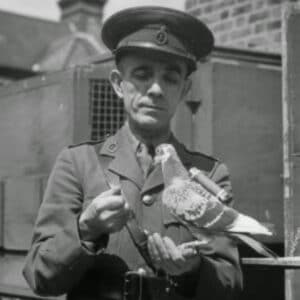
The Distinction Between an Avian Veterinarian and a Vet That Will “See Birds”
Last Updated on by Catherine Tobsing
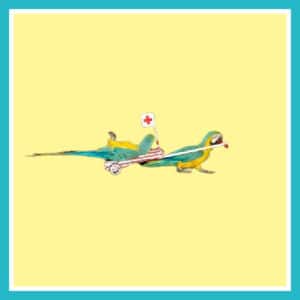
Avian medicine is a relatively new field. I’ve said before there’s only one species of dog but there are more than 10,000 species of birds. Avian veterinarians can treat ducks and birds of prey as well. Like everything in life offering a high-value return, becoming an avian veterinarian requires a high-value effort.
You’ll start by getting a bachelor’s degree with an emphasis in biology, zoology, and/or chemistry.
editors notes: There are a lot of shows about doctors and nurses on TV, highlighting the interrelationships of residents versus staff but I’ll bet you didn’t know that there’s a new reality TV show released late last year called “Vet School”
Veterinary practices will vary geographically. Rural practices will deal with horses, cattle, and chickens whereas urban practices see pet birds.
Next, you’ll need to get a doctorate from a University whose curriculum paths enable you to have education specifically related to treating exotic birds.
With a doctorate in hand, you’ll need to complete an internship and then a residency in private practice or a public facility that cares for avian exotics.
You’ll want to join organizations like the Association of Avian Veterinarians which will help you network because you’re going to have to decide what state you want to practice exotic avian medicine and then get a license in that state so you can open your own practice or join a team with an existing facility.
Feathered factoid: most mammals have a pair of lungs that expand and contract with the movement of a diaphragm.
If birds breathed like that they would bob up and down in the air like submarines taking in water to submerge and blowing out water to rise.
Bird’s lungs use a series of nine air sacs as bellows pushing the air in one direction over the lungs which is far more efficient if you have wings.
Let’s let Emma explain it better than I ever could.
And why do we not so casually toss in that “Board Certified” thing?
Reading from Dr. Greg Burkett’s biography
Preparation for board certification examinations in avian specialty practice given by the American Board of Veterinary Practitioners included 12 months of reading, reviewing, and studying all aspects of avian medicine, surgery, care, and behavior.
I sat for and passed the examinations in November 2002, earning Diplomat status in the American Board of Veterinary Practitioners in Avian Practice; at that time a status that could only be claimed by fewer than 100 veterinarians.
Annually I exceed state requirements in continuing education credit, attending conferences and seminars in my field of expertise. I log more than 25 credit hours annually in the field of avian medicine and surgery with additional 3-5 credit hours attending wet (sic) labs.
End biography – New subject
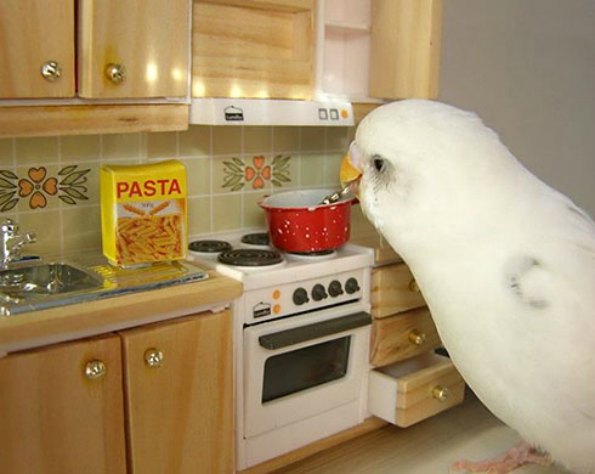
A subject “soon to be” caged bird keepers find on the “Internet” is how no-stick cookware ie Teflon cookware (which contains PTFE’s) as well as Perfluorooctanoic acid (PFOA), also known as C8, is another man-made chemical.
It is used in the process of making Teflon and similar chemicals (known as fluorotelomers), although it is burned off during the process and is not present in significant amounts – the final products can kill your pet birds.
Public service announcement: Teflon is not only found in cookware but dozens of products in your home.
When our cockatiel was fighting (a losing) battle with cancer, I found it only slightly unnerving that she got “get well cards” & phone calls from her internet fans. I NEVER have gotten a get-well card or a feeling better phone call. But then again she is way cuter than me.
Catherine took Popcorn to see Dr. Byron today. 50-mile-an-hour winds here in Chicago caused a power outage at the veterinarian’s office the moment she got out of the car.
The examination was done with a flashlight and 8 more mL of fluid were drained from her belly bringing the total to 55 mL over four weeks.
That’s about 50% of the bodyweight of your average cockatiel. While in the office Catherine had a talk with Dr. Byron and asked why are we doing the eggs and the 21 day brooding cycle if she’s not brooding? “She’s looking at those eggs like another bird left them there.”
The eggs and the 21 days were my ideas that Dr. Byron agreed with. Leave it to Catherine (Mother Freakin’ Earth) to simplify our plan which is to remove the eggs (now) and consider today “day one” of the 72 hours of the continuous light protocol.
Nothing is going to change except the “wait” (and who doesn’t hate waiting?) with the expectation that shutting down the reproductive system will shut down the little oil rig ovarian thing she has going on in her belly.
related -> Hello Mitch and Catherine.
I am very sorry to hear of Popcorn’s maladies which are undoubtedly very taxing on all of you. I have a pair of cockatiels who are now about 18 years old. In the early days, my hen Sunnie wanted to lay eggs more than anything (and once laid a dozen before I could stop her).
They had one fertile egg that hatched. In a later episode of egg-laying, the vet (Dr. Sakas at Niles Animal Hospital who was trained by Dr. Lafeber and eventually bought his practice) also gave my hen a Lupron shot and advised me to keep them covered 12 hours a day. Since they have their own room this was fairly easy to do.
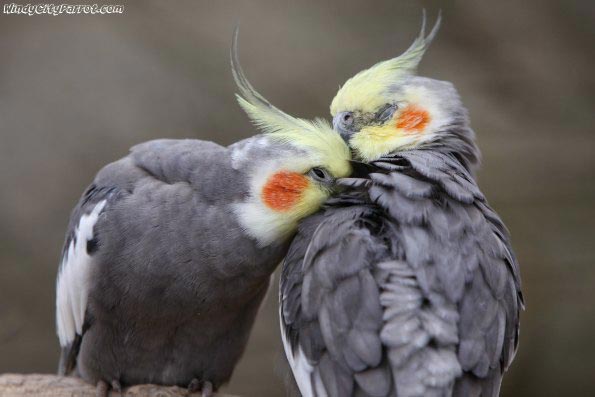
Ever since then they stay covered 11-12 hours a day. He also gave her calcium powder to be dispensed in a pinch several times a week. Also as you have advised before, petting is not good for a hen-no matter how much fun it is for us humans.
And then I take care to remove what I call “cockatiel porn”–the little pieces of paper, cardboard, or whatever else they chew on and leave in sexy places like behind the sofa. Those innocent-looking bits of paper are actually a stimulus for egg-laying in cockatiels as far as I can tell!
Good luck with Popcorn’s health. I hope she is 100% better very soon!
Sincerely, Cindi K.Customer
Thank you for the kind words and advice Cindy – the part that I am perplexed about is keeping them in darkness (covered 12 hours a day). A hollow in a tree is dark and is a place where cockatiels go to breed.
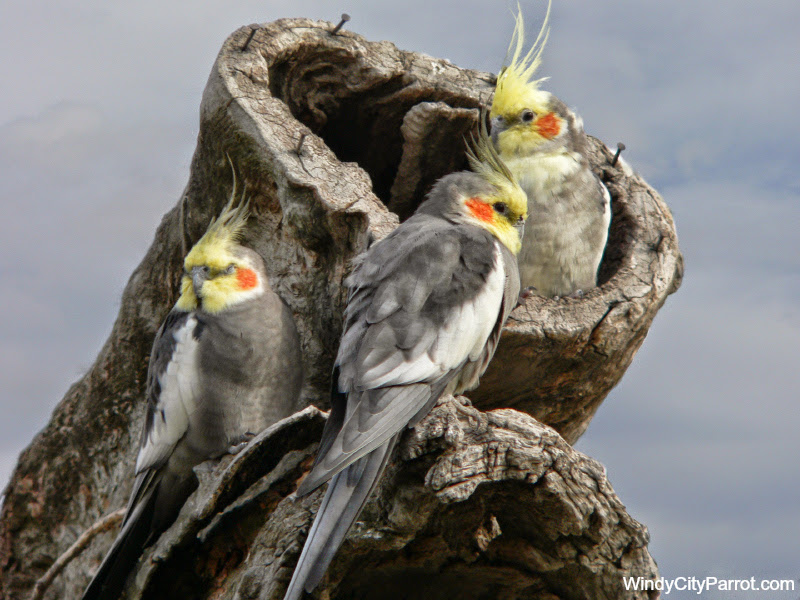
I hate being at odds with avian veterinarians but for me, that is a conundrum.
But if you take your interactions at Niles Animal Hospital and look at the plan that I developed with Dr. Byron as a counterpoint – our knowledge base is so shallow that we only have to admit we know so little about these feathered creatures we brought into our lives.
They are so different than mammals. I think many people incorrectly believe that because they have been a good caregiver to a mammalian pet, caring for a bird is nothing more than another notch in the holster.
When you begin to break down the differences between avian species and mammalian species the differences are stunning.
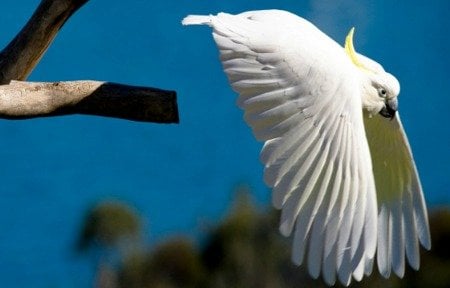
Birds don’t have:
- teeth
- diaphragms
- milk-producing breasts
- muscles in their feet
- sweat glands
- external sex organs
- a redundant set of manipulative extremities (arms)
- fur or hides
Birds do have:
- the ability to fly
- feathers
- beaks
- the ability to speak
- the capability of producing tools
- the choice of seeking food over enormous geographical areas
- the ability to fly (worth repeating)
Feel free to add a comment below.
Written by Mitch Rezman
Approved by Catherine Tobsing
Author Profile
Latest entries
 The Traveling BirdJune 26, 2025Can You Name 5 Parrot Species That Are Living Wild in the USA?
The Traveling BirdJune 26, 2025Can You Name 5 Parrot Species That Are Living Wild in the USA? Bird BehaviorJune 26, 2025How is it Parrots Are Problem Solvers Social Animals and Even Use Tools?
Bird BehaviorJune 26, 2025How is it Parrots Are Problem Solvers Social Animals and Even Use Tools? Bird & Parrot AnatomyJune 25, 2025How a Tiny Chemical Modification Makes Parrots Nature’s Living Paintings
Bird & Parrot AnatomyJune 25, 2025How a Tiny Chemical Modification Makes Parrots Nature’s Living Paintings PigeonsJune 20, 2025How Do Parrots Thrive in Cities Outside Their Native Habitats?
PigeonsJune 20, 2025How Do Parrots Thrive in Cities Outside Their Native Habitats?

